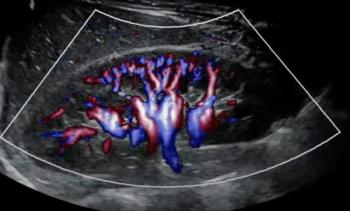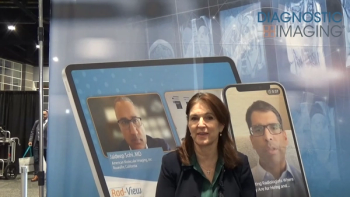
Is CT Overutilized in the ER for Suspected Urinary Stone Disease?
Reviewing data from over 4 million patients who presented to emergency departments with suspected urinary stone disease between 2012 and 2018, researchers noted a greater than 10 percent decrease in visits with no imaging study and a greater than 10 percent increase in visits with CT imaging.
In a newly published analysis of imaging trends in emergency departments for patients presenting with suspected urinary stone disease (USD), researchers note that computed tomography (CT) is the predominant imaging modality utilized but suggest that ultrasound may be a more viable first-line alternative.
Utilizing 2012, 2014, 2016 and 2018 statistics from the Nationwide Emergency Department Sample, researchers examined data from 4,215,695 patients who presented to emergency departments (EDs) with suspected urinary stone disease.1 The mean age of the patient population ranged from 45 in 2012 to 46.3 in 2018 with female representation ranging from a mean of 40.1 percent in 2012 to 42.1 percent in 2018, according to the study,
The researchers found that no imaging was obtained in 39.1 percent of ED visits for suspected USD in 2018 in comparison to 50.5 percent of ED visits in 2012. Emergency department use of CT in this patient population rose from 48.6 percent in 2012 to 59.2 percent in 2018. The study authors also pointed out that routine discharges from the ED increased from 88.9 percent in 2012 to 96 percent in 2018.1
Citing a number of considerations, the researchers suggested that ultrasound, which showed a slight increase from 2012 (1.49 percent) to 2018 (2.07 percent), may be a more beneficial first-line imaging option in this patient population.1
The study authors maintained there is no current evidence in the literature indicating that CT use is superior to other imaging modalities in reducing morbidity or improving USD outcomes.2 Ultrasound use could reduce repeat radiation exposure for patients with recurrence of urinary stone disease, according to the authors.3 While acknowledging the greater sensitivity of CT in diagnosing USD, the researchers suggested this wouldn’t be necessary in cases involving smaller urinary stones that may pass without the need for intervention.
“These imaging trends should encourage the (American Urological Association) to follow the lead of the European Urological Association and update guidelines that recommend ultrasonography for the initial evaluation of suspected USD,” wrote Alan C. Pao, M.D., who is affiliated with the Department of Urology at Stanford University, and colleagues.
In an
“Computed tomography imaging brings in revenue for emergency departments (EDs) and hospitals, including direct income from CT and visit upcoding if CT was obtained. If there is even a small chance of benefit of CT, the incentives are aligned to perform it,” explained Smith-Bindman, a professor in the Department of Epidemiology and Biostatistics at the Philip R. Lee Institute for Health Policy Studies at the University of California, San Francisco (UCSF), and colleagues.
References
1. Ganesan C, Stedman MR, Liu S, et al. National imaging trends for suspected urinary stone disease in the emergency department. JAMA Intern Med. 2022 Oct 31. doi: 10.1001/jamainternmed.2022.4939. Online ahead of print.
2. Smith-Bindman R, Aubin C, Bailitz J, et al. Ultrasonography versus computed tomography for suspected nephrolithiasis. N Engl J Med. 2014;371(12):1100-1110.
3. Demb J, Chu P, Nelson T, et al. Optimizing radiation doses for computed tomography across institutions: dose auditing and best practices. JAMA Intern Med. 2017;177(6):810-817.
4. Smith-Bindman R, Nielsen ME, Wang RC. Unchanged diagnostic imaging for urinary stone disease—where do we go from here? JAMA Intern Med. 2022 Oct 31. doi: 10.1001/jamainternmed.2022.4917. Online ahead of print.
Newsletter
Stay at the forefront of radiology with the Diagnostic Imaging newsletter, delivering the latest news, clinical insights, and imaging advancements for today’s radiologists.




























